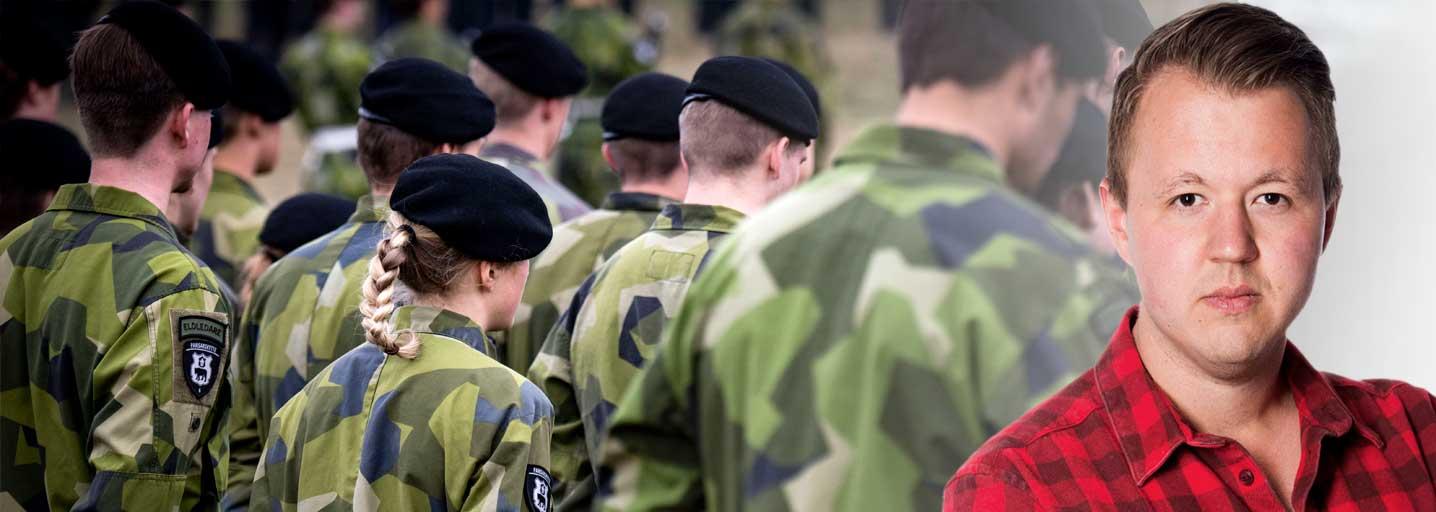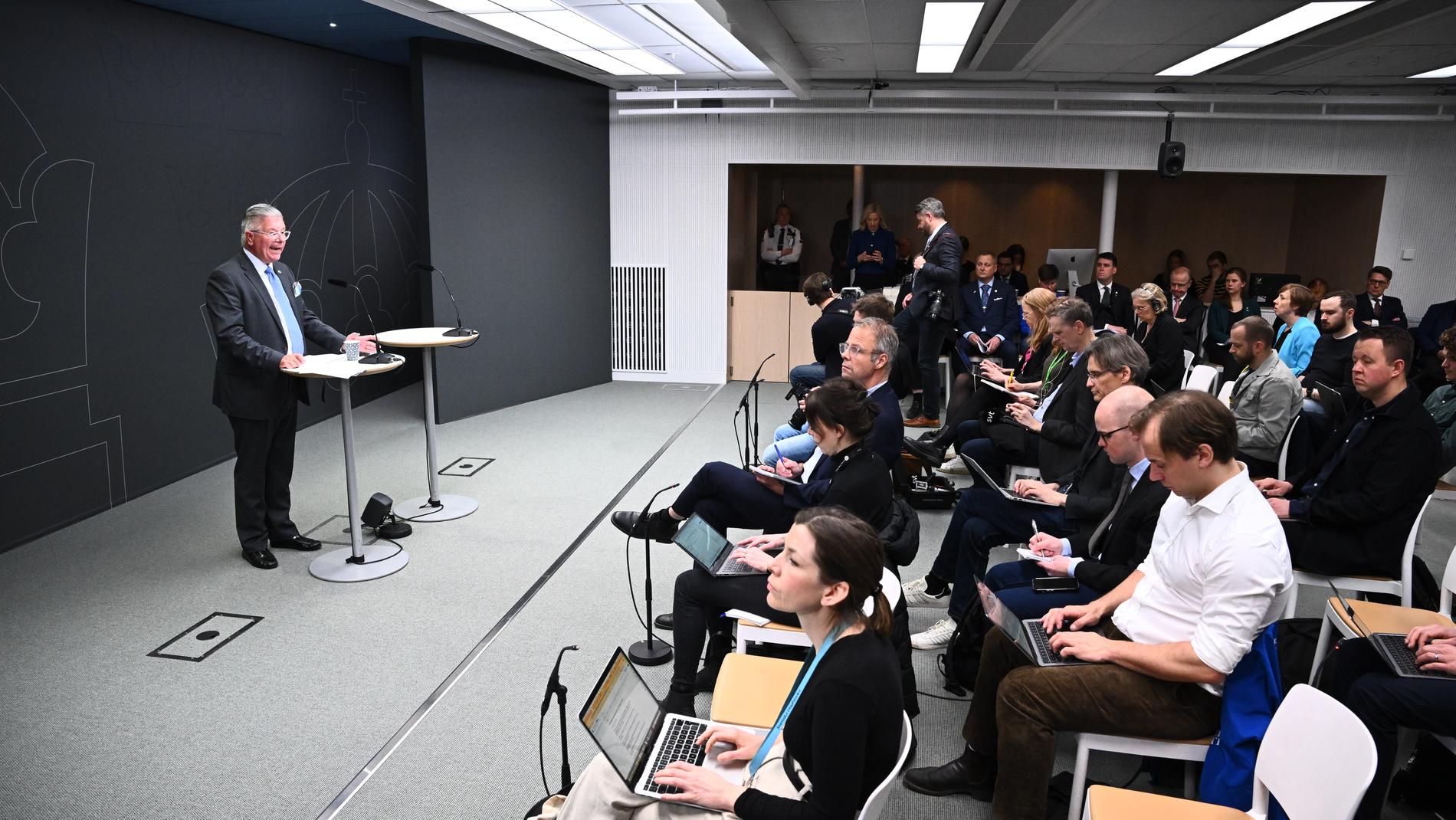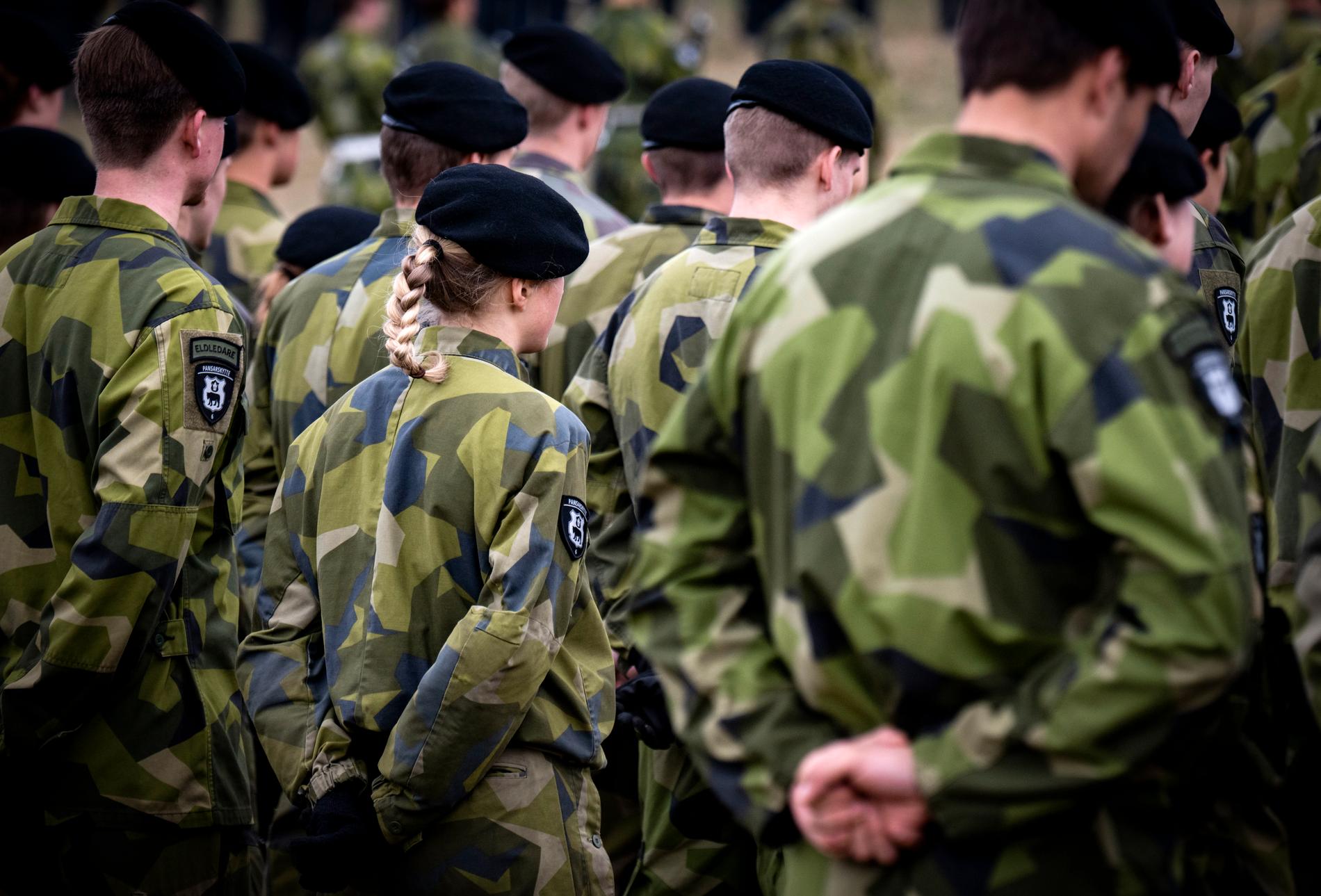
The Defense Committee
53 billion – is it even a bet?
Niclas Vent
Reporter
This is a commenting text. Analysis and positions are the writer's.
Updated 14.47 | Published 14.34
Big, bad Putin's foul breath is getting more and more intrusive.
Then 53 billion extra per year will be spent on equipping the straw house of the Swedish defence.
But not the phase, it is enough for a house made of bricks.
We can only hope that reality does not come to huff and puff.
Is it a crisis?
If you listen to what the politicians say, the answer is yes. Actually the most serious situation since the Second World War, according to Prime Minister Ulf Kristersson (M).
A stream of politicians and experts are now counting the now counting the number of years we have to get ready for a Russian attack west on the fingers of one hand.
But words and reality tend to be different things.
British Prime Minister Rishi Sunak announced the other day an increase in defense spending to 2.5 percent of GDP by 2030. The country's industry is to be put "on a war footing."
Oh well. In that case, it must be about a very small war. Or a very small foot.
During World War II, Britain's defense spending peaked at over 50 percent of GDP.
Sweden, safely outside the conflict, was at 12–13 percent.
See there, what war feet really cost.

The defense committee's chairman Hans Wallmark (M) during a press conference on Friday where the defense committee's final report is presented. Photo: Claudio Bresciani/TT
In 2030, Sweden's defense spending should be up to 2.6 percent of GDP - SEK 52.8 billion more than today.
Is it a bet?
We still don't even have the defense that politicians decided we would build four years ago.
The army's four brigades are not ready. We now have one, barely two. Robotic air defenses on the corvettes are not installed. No new corvettes have been ordered. Anti-aircraft systems for the brigades have not been purchased.
Much of the money will simply go to completing the defenses we thought we needed before major war broke out in Europe.
Before Iranian weapons started bombing maritime traffic on the Red Sea.
Before we gave away military equipment worth SEK 30 billion to Ukraine.
Before an orange man with a weird haircut threatened to storm back into the White House and knock the legs out of NATO.

It all depends on how you look at it.
If this is a real turning point - a "pre-war period" as both Polish President Donald Tusk and Sweden's Chief of Defense Staff Michael Claesson say - then it will not be enough to meet the demands of the outside world step by step, with the eyes rather on what the treasury is capable of than what is needed.
War is disrespectful that way. It does not wait for us step by step to build the ability to face it.
However, it is easy to understand the resistance.
Defense is the place where politicians' dreams come to die.
Every penny for carbines that should ideally never have to be fired in harm's way is a penny that cannot go to climate change, healthcare, schools or reduced taxes.
No one becomes a politician to shovel billions into a bottomless pit, where the results are only noticeable when you yourself have retired.
If we are lucky, it will "only" have passed 14 years after the order before Sweden's two new submarines are delivered.
Who survives so many years in top politics?
The trade-offs are not easy. Defense is not exactly Sweden's only need. But the question cannot be whether we can afford it. The only question is where the money will be taken from.
There awaits a political conflict that has not yet been fought.
The argument about the money for defense
In 2030, defense will cost an extra 53 billion a year.
S, V and MP demand a special tax on the rich to plug the hole in state finances - something that the governing parties reject.
- You cannot live on expenses alone, says Peter Hultqvist (S).
The defense committee, where all parties in the Riksdag are represented, today agreed on a new long-term plan for Sweden's defence.
Most things were agreed upon:
All in all, this means that 2.6 percent of Sweden's GDP goes to military defense in 2030, according to NATO's way of calculating. Today, the expenditure corresponds to 2.2 percent of GDP.
Tax for the richest
But where the money will come from is not clear.
- The amounts are so large that they risk crowding out other needs in the treasury. There is a risk that care, school and care will be affected, says Peter Hultqvist (S).
S, V and MP therefore want a special contingency tax for the richest to pay for part of the increase.
Peter Hultqvist (S). Photo: Peter Wixtröm
The parties want it to target high income earners with large capital gains. It could bring in around SEK 15 billion, according to Peter Hultqvist.
- It is not unknown that the economic gaps in Sweden have increased quite substantially and that the higher strata have had much better economic conditions. We believe that a tax like this, where these groups can contribute to the defense, will not cause any major problems, says Peter Hultqvist.
Hanna Gunnarsson, the Left Party's defense policy spokesperson:
- I think there are many highly paid people in Sweden who want to join and pay for a stronger total defense. This is not the time for tax cuts. We need more money in the system, she says.
The criticism: "Not the right way"
The governing parties and SD are completely cold-hearted about the proposal. Nor is C behind.
- The Social Democrats have thrown the funding issue into the Defense Committee, it has never been the Defense Committee's responsibility, not even when Peter Hultqvist was Minister of Defence, says Anna Starbrink, the Liberals' defense policy spokesperson.

Anna Starbrink (L). Photo: Jessica Gow/TT
- This is a way for him to try to push through a contingency tax, which from my perspective is just a relaunch of the old defense tax that the Liberals helped abolish. That's not the right way to do it. The financing of this much money must take place in a collective approach in the state budget. There it is about priorities and using the budget space that is available.
The defense committee also wants to see an investment in civil defense - but the proposal is far from the needs described by the Norwegian Agency for Community Safety and Preparedness (MSB).
Covering the needs would cost SEK 32 billion per year until 2030, according to MSB.
The defense committee proposes an increase of an average of NOK 6.5 billion per year during the same period - which thus covers 20 percent of the identified needs.
FACTS
The Defense Committee's proposal
Three mechanized brigades and one infantry brigade essentially operational by 2030.
A new field unit, Norrland's infantry regiment, in the war organization.
Training of conscripts is increased from 8,000 to 10,000 in 2030 and 12,000 in 2032.
The navy's personnel is reinforced.
Expanded anti-aircraft capability.
Investment in air bases to be able to spread out the combat aircraft.
More ammo and spare parts, more hunting and cruising robots.
New territorial units, organized into about twenty companies and platoons.
More refresher training for war organization requirements.
Reinforcement to the voluntary defense organizations.
Expansion of officer training.
Source: TT/The Defense Committee
FACTS
That's how big the defense budget should be
2025: 135 billion (bdr)
2026: 142 months
2027: 153 bd
2028: 171 bd
2029: 175 bd
2030: 185 billion
Footnote: In current prices
Source: TT/The Defense Committee

Inga kommentarer:
Skicka en kommentar